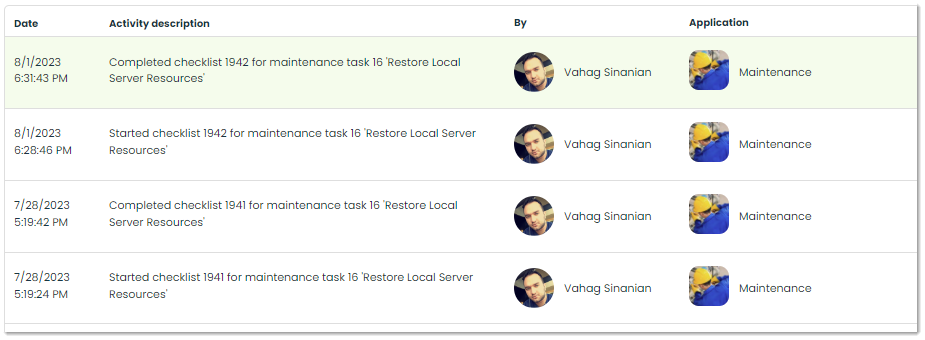Table of contents
Getting Started with Maintenance Director
Thursday August 3, 2023-13 min readIntroduction
The Maintenance Director app is designed to help organizations efficiently manage essential Work Tasks. To stay on track and ensure your business assets are functioning optimally, it’s important to actively manage your organization’s one-time or recurring maintenance tasks. This guide will show you how to get started with Maintenance Director, including how to create, schedule and manage tasks with ease.
Let’s get started
To open Maintenance Director, go to the Operations section of the main navigation bar and select Maintenance Director from the dropdown.
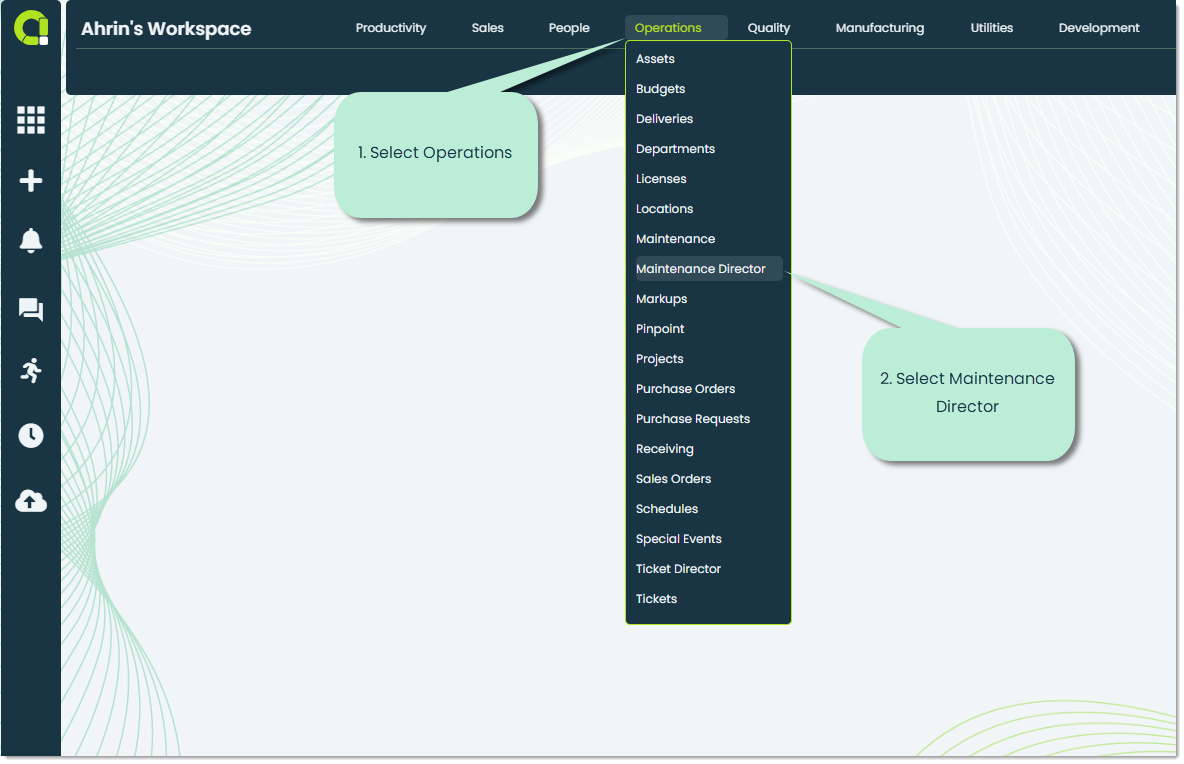
At the top of the screen in Maintenance Director, you’ll see six main tabs.

Here’s an overview of what’s available in each of the tabs.
Note: If no tasks or employees have been added by your organization, these tabs will be blank.
Work Tasks – This is the default tab whenever you open the Maintenance Director app. It contains all the existing Work Tasks that have been created and assigned to an employee.

People – The People tab contains the employees in your company who have been assigned a maintenance task. While in the tab, you can see employee name, position, department and their assigned maintenance tasks.
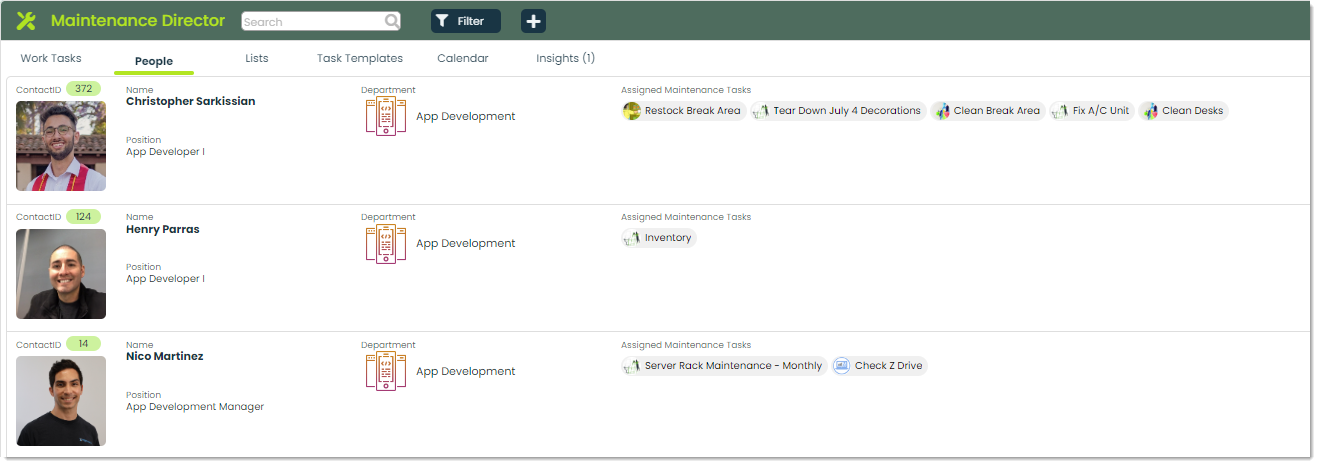
Lists – The Lists tab provides you with a collection of task lists that your organization has created. As an example, a Break Area Maintenance list can contain multiple tasks related to maintaining the Break Area.

Task Templates – In Task Templates you can view and create easy-to-use templates. Templates allow you to quickly and efficiently create new tasks.

Calendar – The Calendar tab contains a visualization of all existing Work Tasks in your organization. You can view and sort tasks by Month, Week, or Day.
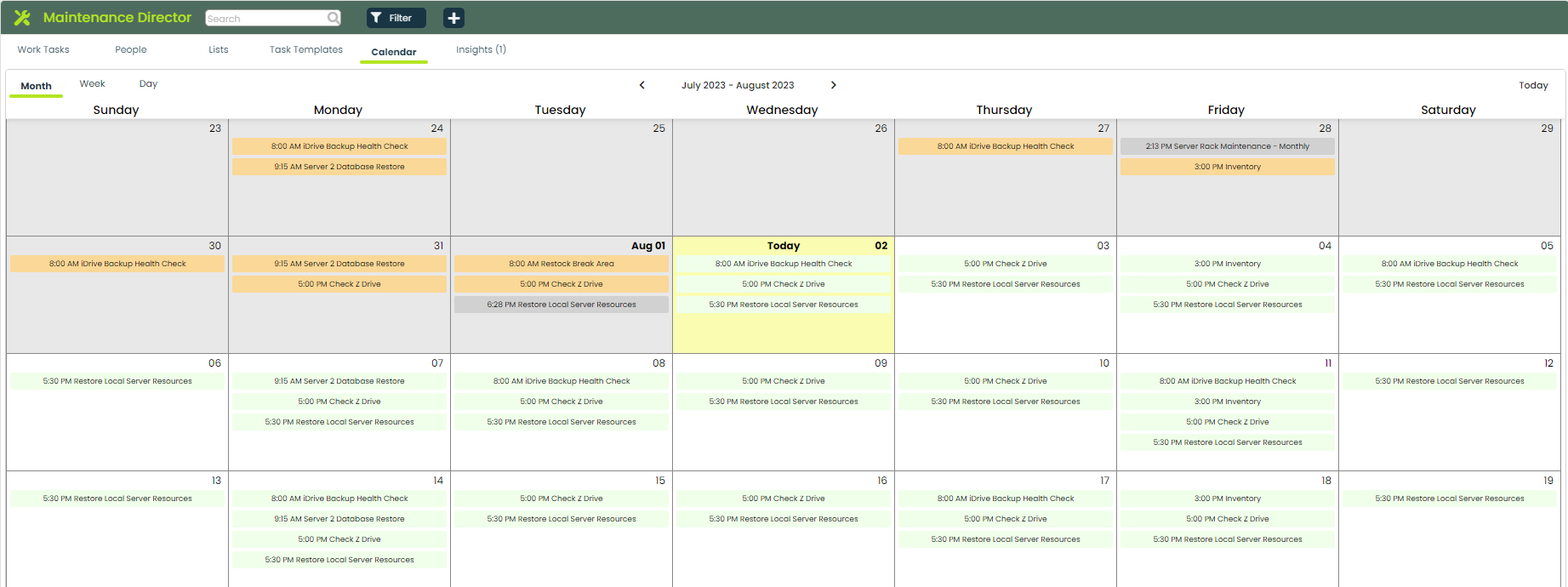
Insights – This tab provides you with visuals used to analyze Maintenance data. With Insights, you can use fully customizable SQL queries to gain valuable information about current, completed, and upcoming tasks. For more on Insights, check out the Getting Started with Insights guide.
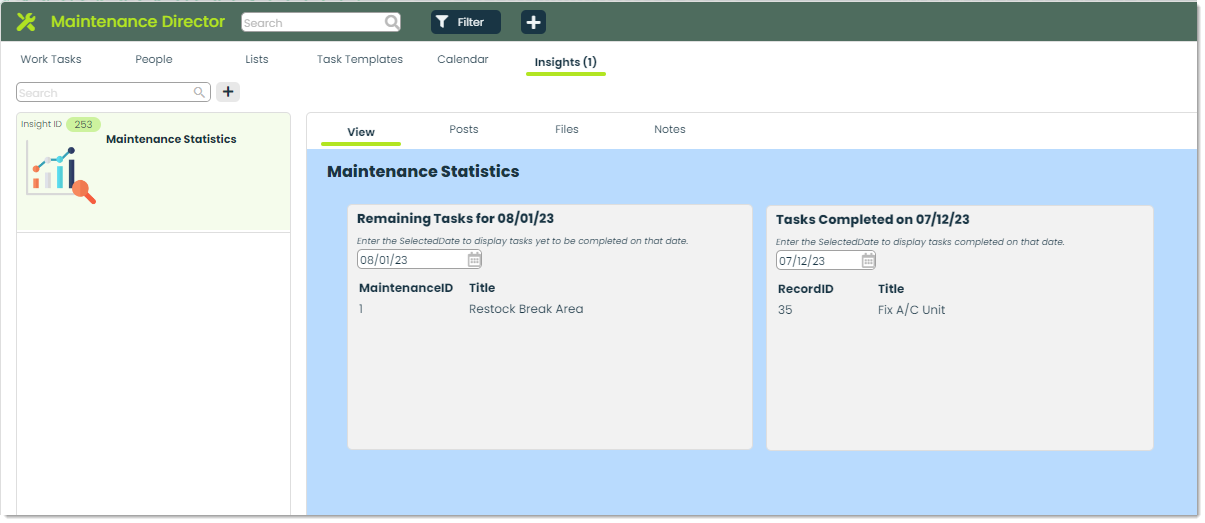
How to create and schedule Work Tasks
To add a Work Task, click + at the top of the main screen.
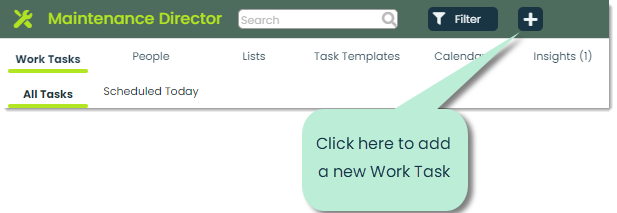
A popup will appear where you can add details about the Work Task.
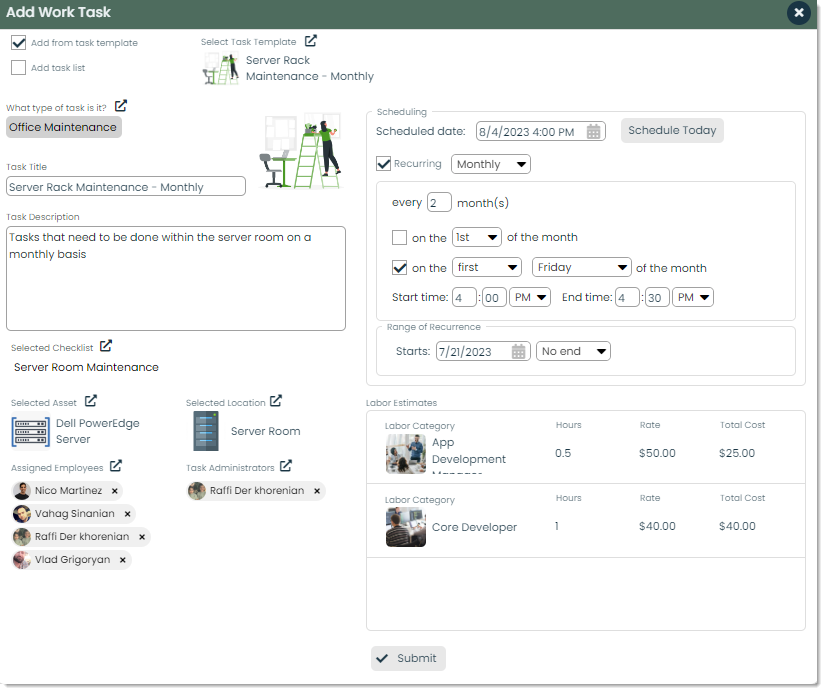
Templates – You can use a previously created task template to help you create a task. If you wish to assign a list of tasks, you can do so by selecting Add task list.

Task Type -You can categorize tasks by the type you select. In Appward, Types are a helpful way of categorizing your information to make it easier to sort, find and get Insights from your data. As an example, Types can be used within Maintenance Director to distinguish between IT, Restocking, Office Maintenance, or Routine Cleaning tasks.
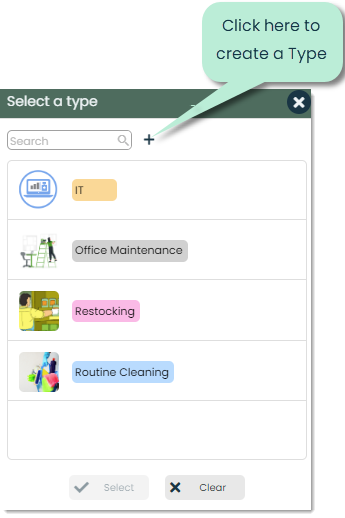
Note: If your organization has not created any Task Types, the Select a type picker window will be empty.
To add your own types, press + at the top of Select a type.
Title – You should make the title of the task clear-cut and concise.

Description – Under the caption Task Description, you can write information about the task being created.
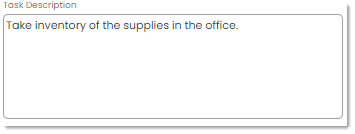
Selected Checklist – You have the option to add a Checklist from the Checklist Creator app. In Maintenance Director, Checklists serve the purpose of ensuring that all of the necessary actions within a task are completed. With Checklists, you can keep a more structured and organized approach during the completion of a task.

Selected Asset – Appward defines assets as any valuable resource or item that contributes to an organization’s ability to achieve its objectives. As an example, you could have assets such as servers, chairs, or specific rooms within an office.

Selected Location – You can define the physical location of where the task is completed in Selected Location. For example, you could set the location to break area or server room.

Task administrators – Task Administrators have the responsibility of coordinating projects, ensuring effficient workflow for timely completion, and effectively communicating among team members. You can assign the responsible individual(s) in Task Administrators. If you are a Task Administrator, you will have permission to edit features of the Work Task.
Note: Creator of the Work Task and the administrator do not have to be the same person.

Assigned employees – In Assigned Employees you can assign the employees who will be responsible for completing the assigned task. As the task creator, you have the ability to designate yourself or other employees as responsible for completing the task.
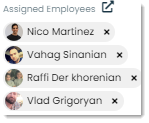
Scheduling – In Scheduling you can select a time and date for when a task is to be completed. If you wish to schedule a task that is recurring, you can do so by ticking the Recurring field. Once you have selected recurring, define how often the task will be completed, and the range of recurrence.
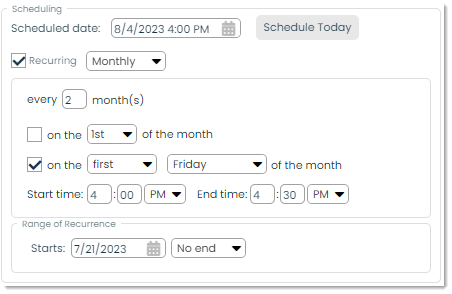
Labor estimates – Labor estimates provide your organization with information about the amount of time and effort required to complete a task. You can use labor estimates as a basis for scheduling, budgeting and allocating resources, helping you make informed decisions. In the Labor Estimates field, you can view the labor category and cost of the labor required.
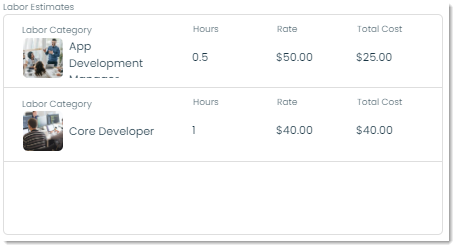
Submit – Finalize your created task by pressing Submit. You will see your task posted to the Work Tasks tab once this is complete.

How to view or edit a Work Task
To view existing Work Tasks, you can go to the Work Tasks tab.

If your organization has already created Work Tasks, you will have access to a list view displaying all the tasks. In order to access a task record, click on the row of the task you wish to see.

A flyout will then present you with details about the task. If you have access, you have the option to modify different fields of the maintenance task.
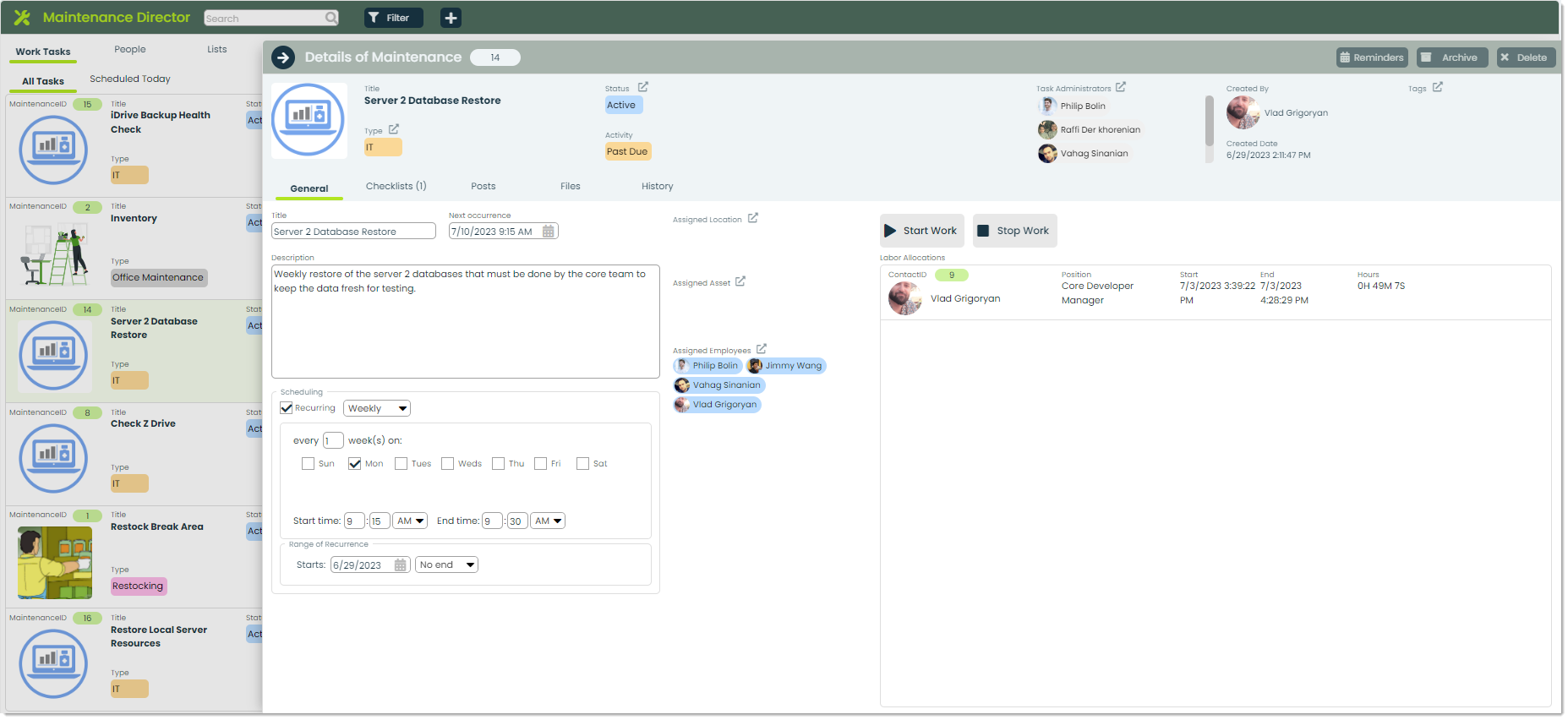
Let’s go over how the edit process works for fields in this flyout.
You can edit who the Task Administrators are in Task Administrators.
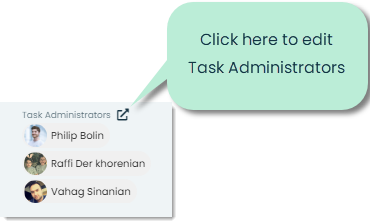
If you are an employee with access, you can change the status of a work task to inactive, active or complete.

Employees with access can also rename and reschedule existing tasks if needed.
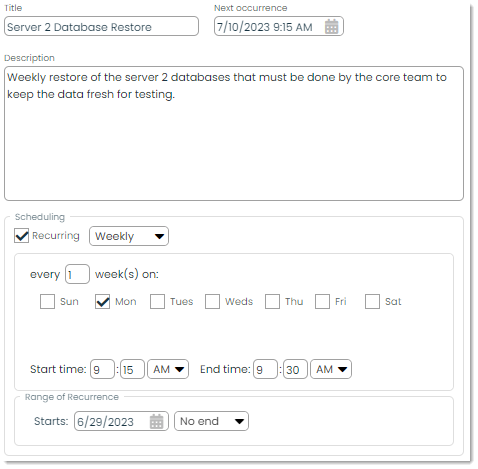
Note: In Appward, many apps utilize auto-save. In Maintenance Director, you can make changes to tasks and they will update automatically.
As an employee or administrator with access, you can start and stop a built in timer to accurately track labor allocation for the designed task.

How to add and use a Task Template
In Maintenance Director, the use of Task Templates is prevalent. With templates, you can efficiently create tasks without compromising on quality and consistency.
To add a custom Task Template, press the + at the top of the Task Templates.

The Task Templates creation process is similar to that of Work Tasks.
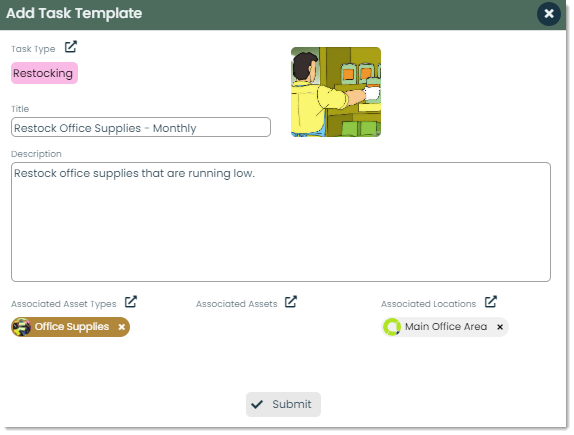
Once you have created a Task Template, you can use it to quickly create new Work Tasks. You can select Task Templates when adding a new task in Add Work Task.

Frontline Features of Maintenance Director
Most Appward apps have a set of built in functions known as Frontline Features. You can access these features in tabs throughout the app.
Maintenance Director has Posts, Files, and History as its Frontline Features.

Posts – In Appward, a post is a comment that can be liked or replied to directly by other members of your organization. A common use of posts in Maintenance Director is to explain how specific tasks were completed.

Files – Files enable members of your organization to stay on track, collaborate effectively and make well informed decisions. In Maintenance Director, you can use Files to keep things in context or provide extra information about a Work Task. As an example, you could have a file explaining how to clear storage space for a task involving data drives.

History – With History, you can access detailed information about the status changes of a Work Task, including the employee responsible for the update, the timestamp of the modification, the application, and a brief description of the activity performed.
